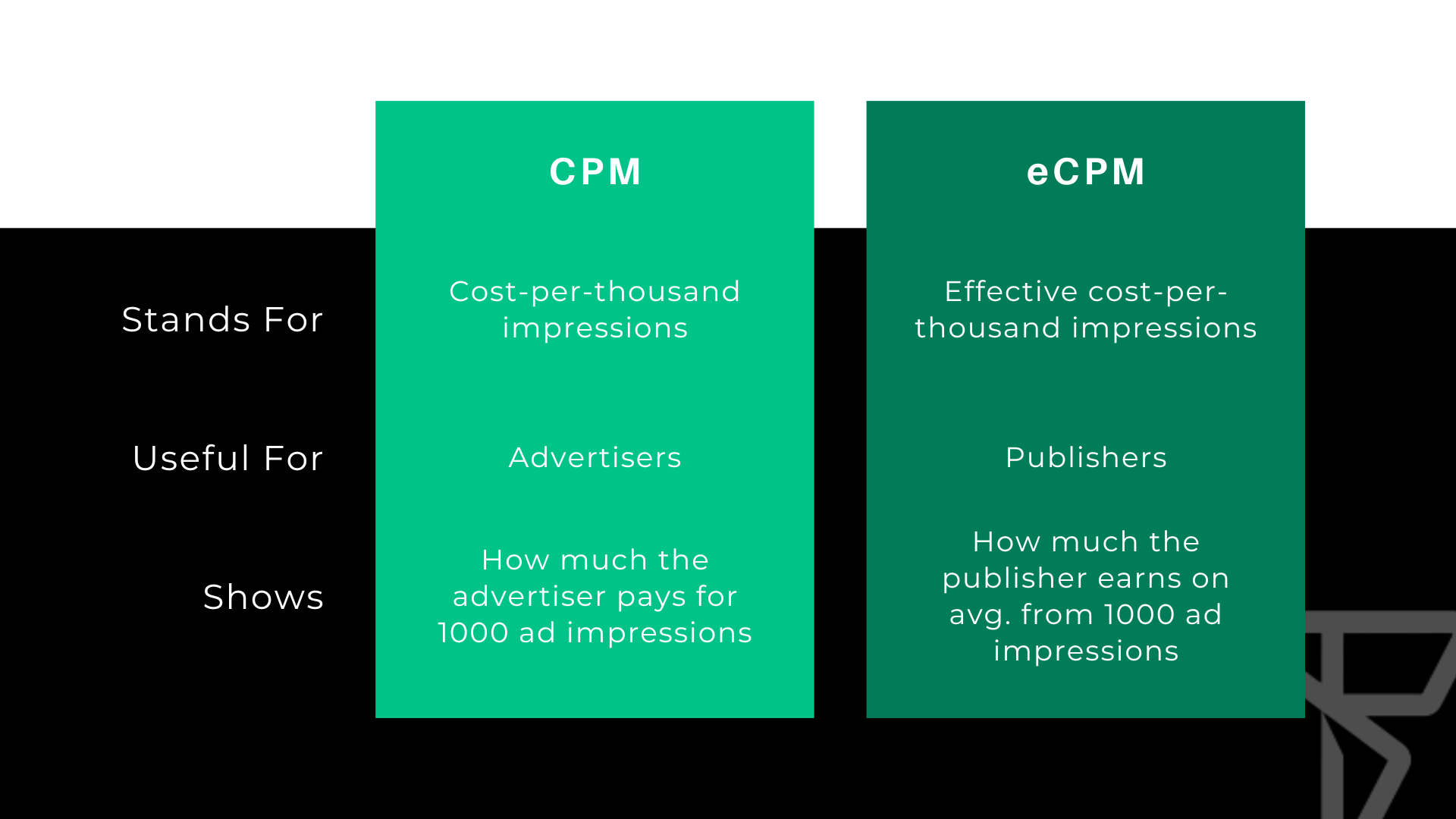Publishers can use CPM (Cost Per Mille) and eCPM (Effective Cost Per Mille) as ad revenue models to monetize their websites or app. While they are related, they serve slightly different purposes and are used together to optimize ad revenue. Let’s dive into each one.
What is CPM?
CPM stands for cost per mille, which means the cost per thousand impressions. eCPM, on the other hand, stands for effective cost per mille, a metric used to measure the revenue earned per thousand impressions.
CPM Formula
To calculate CPM, you need to divide the cost of advertising by the total number of impressions and then multiply the result by 1000. The formula for CPM can be written as follows:
CPM = (Cost of advertising / Number of impressions) * 1000
For example, if the cost of advertising is $100 and the number of impressions is 10,000, then the CPM would be:
CPM = ($100 / 10,000) * 1000 = $10
What is eCPM?
eCPM stands for “effective cost per mille,” a metric used in digital advertising to measure the revenue earned per thousand impressions. In other words, it estimates how much money an advertiser earns for every thousand ad impressions served.
eCPM Formula
To calculate eCPM, you need to divide the total earnings by the total number of impressions and then multiply the result by 1000. The formula for eCPM is written as:
eCPM = (total earnings/number of impressions) * 1000
For example, if the total earnings are $500 and the number of impressions is 10,000, then the eCPM would be:
eCPM = ($500 / 10,000) * 1000 = $50
eCPM is a useful metric because it allows advertisers to compare the revenue earned from different advertising campaigns, even if the campaigns have different CPMs.
Benefits of Using CPM and eCPM
CPM (cost per thousand impressions) and eCPM (effective cost per thousand impressions) are important metrics used in digital advertising to measure the revenue publishers earn for their ad space. Here are some of the benefits of using CPM and eCPM as a publisher:
- Predictable Revenue: CPM and eCPM provide a predictable revenue stream to publishers. With CPM, publishers know exactly how much they will earn for every thousand ad impressions served. This allows publishers to plan their revenue streams and make better business decisions.
- Monetize All Impressions: CPM and eCPM help publishers monetize all of their ad impressions. By setting a CPM or eCPM rate, publishers can ensure that they are earning revenue for every impression served, even if they don’t sell the ad space directly.
- Optimize Ad Inventory: CPM and eCPM help publishers optimize their ad inventory. By tracking CPM and eCPM rates, publishers can identify which ad formats and placements generate the most revenue. This allows publishers to adjust their ad inventory to maximize revenue.
- Increased Revenue: CPM and eCPM help publishers increase their revenue. By optimizing their ad inventory and setting competitive CPM or eCPM rates, publishers can attract more advertisers and generate more revenue from their ad space.
- Simple to Implement: CPM and eCPM are simple metrics to implement. Publishers can easily calculate their CPM and eCPM rates using ad server data and use this information to optimize their ad inventory.
In conclusion, CPM and eCPM are essential metrics for publishers to measure the revenue earned from their ad space. Using these metrics, publishers can predict their revenue streams, monetize their ad impressions, optimize their ad inventory, increase their revenue, and implement a simple and effective pricing model.





